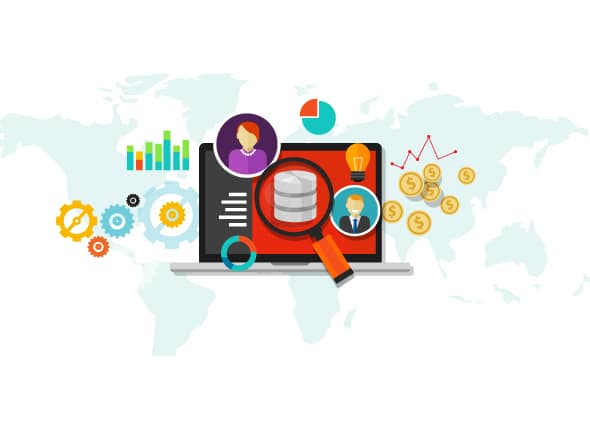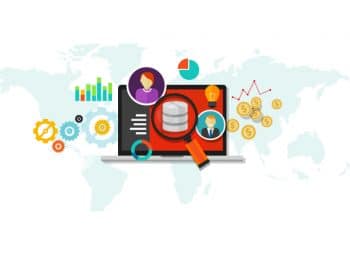As businesses expand and the users increase, as the volume of data grows, as databases change and more new software and other technologies get incorporated, it is observed that a Business Intelligence (BI) solution is unable to adapt to these changes. Of course, most BI software is more or less generic in nature with features such as report, dashboard, ad hoc, cache, security, etc. What it lacks is future-ready architecture. This either results in business needs being compromised or dropped, an expensive switch to the use of best-of-breed solutions, or a firm choosing to develop its own solution in-house or by outsourcing it. This results in a waste of money and time searching for a new BI tool, hiring technical resources and implementing the solution.
So, why should business users adjust their requirements when, ideally, it should be the other way around?
As businesses grow, their expectations from a BI tool keep increasing and since these tools are generally not able to live up to the growing expectations, they get abandoned. This throws up an important question, Are BI tools really intelligent?
An ideal case would be to have a BI tool which is future-ready and developer-friendly, and hence is flexible and extensible. With the growing and ever-changing business requirements, IT staff would then be able to accommodate the advanced requirements by adding features, adopting new technology and hence justifying the investments made. Ideally, such a BI framework should not be bound by any tool or technology limitations and be able to adapt to any sort of requirement current or future. This would be a developers paradise, giving them the liberty to do or create anything, and the business users dream, since whatever they seek can be achieved without compromises. This will also reduce a firms dependence on the BI vendor for any additional functionality or patches/releases based on their product roadmap, since an in-house team would be able to add functionality.
Mentioned below are some of the instances wherein current BI tools do not match with their requirements, and need to provide much better flexibility. You may identify with some of these situations.
1. Can I add new data type as source?
Most BI tools support commonly used data sources, which are limited in number. If any new database type is to be added as a data source, it may not be possible without the database vendor providing the connect. Also, in case the data storage technology is different, like it is with Hadoop, one has to rely on the BI vendor to come up with a new patch or version. Such requests generally take a lot of time to be addressed by BI vendors who have shifted their focus from product innovation to sales. Wouldnt it be great if the developers themselves were able to add data sources, APIs, etc, and enhance the tool?
2. Theres a new API in the market. Can I fetch data from it?
BI tools generally come with native connectors to certain popular APIs. But with the changing times and requirements, new and more relevant APIs come up. Fetching data from APIs other than the pre-installed ones may be impossible or often very difficult. In such a scenario, one may feel the BI tools available today are not very future-ready.
3. Charting options are few, limiting the usage of advanced analytics
After connecting to a database, reports or a dashboard are created. Most of the BI tools come with out-of-the-box charting options, which are limited in scope and may not suffice. Though some BI tools do allow external integration of charts, they often forgo other functionalities such as exporting, email scheduling, etc.
These limited charting options affect companies or people who are looking for advanced functionalities, like data scientists and statisticians looking for statistical and advanced charting. A BI tool should allow charts to be integrated inside the report, dashboard, ad hoc, etc, with the capability to define inter-panel communication, input filters, etc. Also, even if integration of charts is external, other functionalities such as emailing, exporting, trigger, etc, should work well.
4. Reports and dashboards are clichéd…. but I dont have more options
Apart from the plain vanilla reports and dashboards, a BI tool should be future-ready enough for other visualisation options like infographics, what-if analysis, mash-ups, cubes, scorecards, or any other type which currently exists or might come up in the future.
5. The BI software UI looks so very alien!
Often, companies have their own products/software with certain navigation options, icons and colours, adhering to a chosen theme. With BI also being introduced to their solutions stack, wouldnt it be wonderful if the BI tool could be customised to match the design template of their existing solution stack? This would imply having the option to change the navigation, repository access, icons, content menu, colour, text, theme, file extensions, etc, of the BI software as well. Such exhaustive white-labelling capabilities can lead to a unified view of all the enterprise applications, leading to ease of branding, usage and viewing.
Currently, what most BI tools offer in the name of white labelling is changes in the header and footer design, colour and text basically, very limited options.
6. There are so many tools I am compelled to use in a particular piece of BI software
Many of the BI tools require separate software and hardware to be used, such as the server, the designer tool, plugins, community plugins, etc. BI companies release enhancements within these, which at times, lead to compatibility issues. Heres food for thought: What if, using the browser itself, we are able to execute everything exactly in the way the BI solution is being accessed? Imagineno more downloading heavy software, no more compatibility issues or separate purchase of tools, etc.
7. BI vendor engagement never seems to end and so is the case with their billing!
Licensing presents complex issues. It may be based on the core, the number of users, the server, a combination of the above, or on data size. Also, there generally are separate licences for separate tools like the designer, server, plugin, etc. Sluggish performance of the solution leads to an increase in the number of cores and servers, and hence the more number of licences. Maintenance costs, development costs and renewal costs are top-ups. Prices are not benchmarked and, in many cases, pricing is not crystal clear and often depends on the sales person and the bargain being struck.
8. Ad hoc capabilities are limited
Ad hoc capabilities allow business users to drag, drop and create their own reports and dashboards. Many BI tools are extremely limited here, not allowing or extending features to write custom scripts, add HTML, visualisation, custom calculated columns, etc.
9. Can I extend core functionality altogether?
All BI tools fail miserably in their ability to extend core functionality. BI tools are designed with the approach that one size fits all, wherein they sell only generic features. However, every client has a unique requirement. The ability to extend functionality and add features is something that could change the way people view and use BI. Examples of extending functionality could be things like an outlook plugin of BI, offline viewing, introducing new exporting options, a rule-based system, custom alerting notifications and triggers, custom business processes, etc. This could lead to a paradigm shift in the entire scope of BI. Frankly, the sky isnt the limit!
10. I wish I could define the sequence of events
An integrated workflow inside a BI tool could help in defining business processes and thus enhance capabilities. Examples of workflow could be things like: run ETL AND create report AND mail to one set of users when value is between 0-50%, AND send it to other set of users when value is greater than 50%.
11. So much software, so many screens
Companies generally use lots of software; so a client has to navigate through it based on requirements. Right now, we can only integrate BI charts inside other applications. It would be a real value addition if the BI tool is flexible enough to allow integration of other software inside the tool, interacts with this software too, and directly invokes its functions as well!
12. I just cant find BI resource people
Skilled resource personnel is a pressing problem in the BI domain. Resource persons are far too few and the salary they command is far too much, leading to outsourcing of the projects. Why should there be a separate set of resource persons for BI at all? Why cant BI tools be simple enough for a HTML/Java resource person to be able to work on the tool?
Do these situations sound familiar to you? Do you agree with the solutions? If you are able to connect with this situation, you may need to relook at your BI tool or BI implementation!











































































